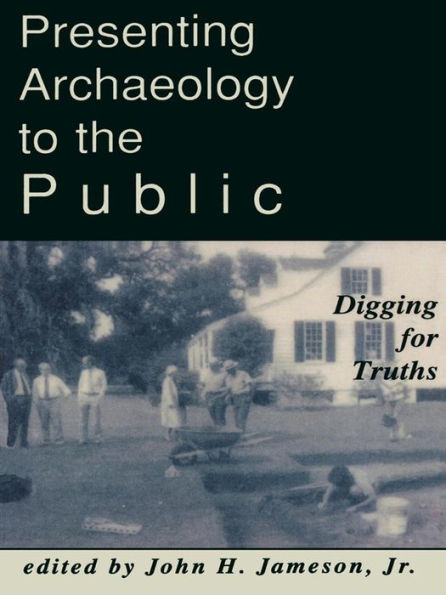Table of Contents
Chapter 1 Acknowledgements
Chapter 2 Foreword by John H. Jameson, Jr. and John E. Ehrenard
Chapter 3 Introduction, by John H. Jameson, Jr.
Chapter 4 One: Background
Chapter 5 1. Presenting the Past: A Framework for Discussion, by Peter G. Stone
Chapter 6 2. The Archaeological Site as an Interpretive Environment, by Parker B. Potter, Jr.
Chapter 7 3. Locating Truths on Archaeological Sites, by Parker B. Potter, Jr. and Nancy Jo Chabot
Chapter 8 4. Generalized Versus Literal Interpretation, by Stanley South
Chapter 9 Two: Strategies that Work
Chapter 10 5. Successfully Integrating the Public into Research: Crow Canyon Archaeological Center, by Margaret A. Heath
Chapter 11 6. The Role of Public Participation: Arizona's Public Archaeology Program, by Teresa L. Hoffman
Chapter 12 7. Sites without Sights: Interpreting Closed Excavations, by Karen Lee Davis
Chapter 13 Three: Interpreting Archaeology in Cities
Chapter 14 8. The Past through Tomorrow: Interpreting Toronto's Heritage to a Multi-cultural Pubic, by Karolyn E. Smardz
Chapter 15 9. Ancient and Modern United: Archaeological Exhibits in Urban Plazas, by Sherene Baugher and Diana Dizerga Wall
Chapter 16 10. The Evolution of Interpretation: The Charleston Place Site, by Nichols Honerkamp and Martha A. Zierden
Chapter 17 Four: Interpreting Archaeology at Museums, Parks, and Sites
Chapter 18 11. Public Archaeology at Cahokia, by William R. Iseminger
Chapter 19 12. Interpreting Cultural Resources: Hatzic Site, by David Pokotylo and Gregory Brass
Chapter 20 13. Putting people Back into the Landscape: Sabino Canyon, by Stephanie M. Whittlesey and Mary Farrell
Chapter 21 14. Archaeology and Interpretation at Monticello and Poplar Forest, by Barbara J. Heath
Chapter 22 15. The Interpretation of Slavery: Mount Vernon, Monticello, and Colonial Williamsburg, by Mark D. Bograd
Chapter 23 16. Museum in the Making: The Morven Project, by Rebecca Yamin
Chapter 24 17. Archaeological Preservation: Drayton Hall, by Meffett B. Lavin
Chapter 25 18. Interpreting Archaeology at Little Bighorn, by Douglas D. Scott
Chapter 26 19. The Archaeology of Billy the Kid, by David T. Kirkpatrick
Chapter 27 Bibliography
Chapter 28 About the Authors
Chapter 29 Index



